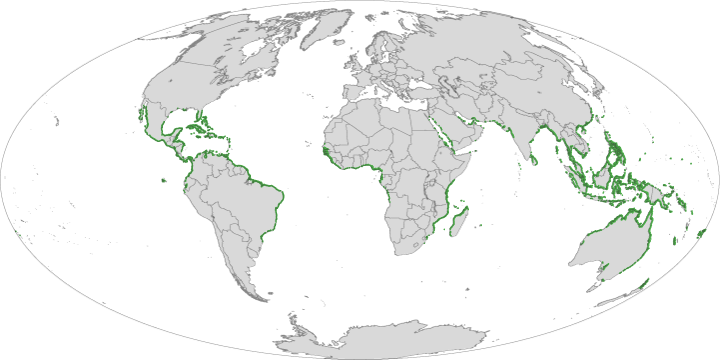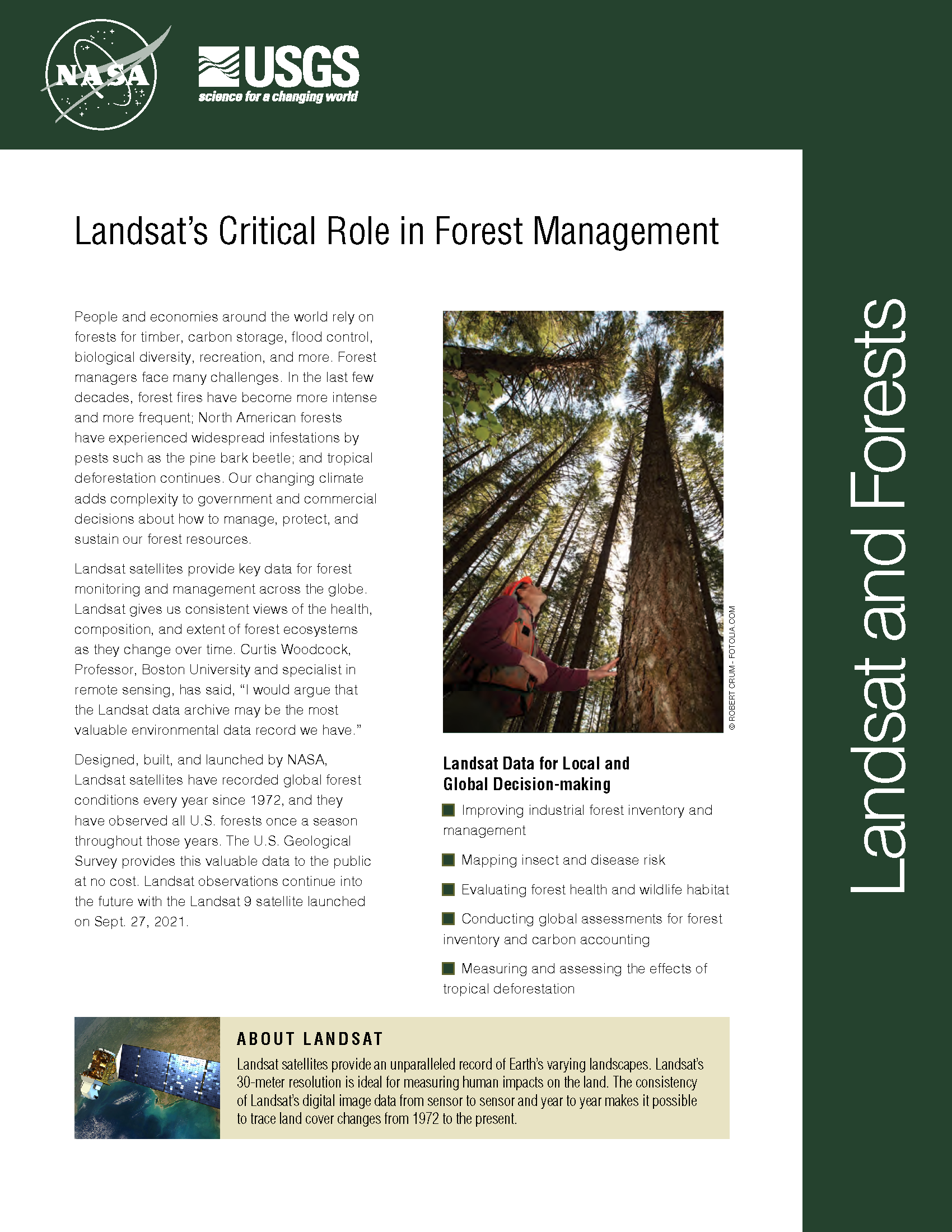Landsat’s Role in Managing Forests
People and economies around the world rely on forests for timber, carbon storage, flood control, biological diversity, recreation, and more. Forest managers face many challenges. In the last few years, forest fires have become more intense and more frequent; North American forests have experienced widespread infestations by pests such as the pine bark beetle; and tropical deforestation continues. Our changing climate adds complexity to government and commercial decisions about how to manage, protect, and sustain our forest resources. Landsat satellites provide key data for forest monitoring and management across the globe. Landsat gives us consistent views of the health, composition, and extent of forest ecosystems as they change over time. Curtis Woodcock, Professor, Boston University and specialist in remote sensing, has said, “I would argue that the Landsat data archive may be the most valuable environmental data record we have.” Designed, built, and launched by NASA, Landsat satellites have recorded global forest conditions every year since the 1970’s, and they have observed all U.S. forests once a season throughout those years. The U.S. Geological Survey provides this valuable data to the public at no cost. Landsat observations will continue into the future with Landsat 8.
Consequences of Aspen Die-off
Trembling aspen are dying. No tree species in North America has a broader habitat and no other is as large (a single clone can be a hundred acres in size).
Landsat Image Maps Aid Fire Recovery Efforts
Contributor: Melissa Quijada, NASA Goddard Space Flight Center NASA satellite images regularly map active fires around the world. Once a fire is out, satellite data and maps are also used by
Landsat Backbone of Forest Monitoring
In a recent EarthSky interview, Landsat science team member Curtis Woodcock talks about the importance of Landsat data to global forest monitoring. Podcasts: • 90 second podcast interview (1.7 Mb) • 8 min.
Root of the Matter: A New Map Shows Decline of Life-Saving Forests
Contributor: Gretchen Cook-Anderson, NASA‘s Earth Science News Team Countless people clung to life in the branches of trees hemming the shorelines during the deadly 2004 tsunami that killed more than 230,000

Landsat Enables World’s Most Comprehensive Mangrove Assessment
The most definitive map of Earth’s mangrove forests has been created with Landsat data. A group of scientists, led by Chandra Giri from USGS-EROS, has calculated that approximately 53,190 square
Study Using Landsat Finds Amazon Storm Killed Half a Billion Trees
A single, huge, violent storm that swept across the whole Amazon forest in 2005 killed half a billion trees, according to a new study funded by NASA and Tulane University.


